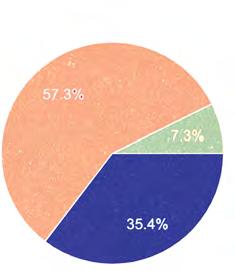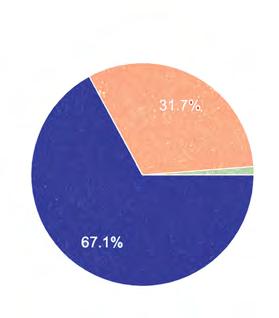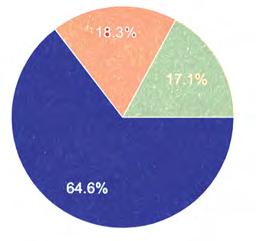
2 minute read
Survey Data
from Weave + Thread
ANALYSIS - REFLECTION - ACTION
SURVEY
Advertisement
Through evidence based research, gathering authentic data via survey and conversations was undertaken. This data was used alongside research into social and cultural dynamics of public space in the current context of COVID-19 to anticipate user needs for sustainable design. The data indicated a multidisciplinary use of public space, value of vegetation and light and opportunities for sensory stimulation.

Link to survey data here
FINDINGS
To fully understand the use of public space prior and during COVID-19 and the transition from pandemic to endemic, participants answered a series of questions relating to public space use and purpose. “Public space” was not SURVEY ON PUBLIC SURVEY ON PUBLIC SURVEY ON PUBLIC defined for the purpose of this research in order to have the most authentic SPACE ANALYSISSPACE ANALYSIS SPACE ANALYSIS responses to the perception and identification of public space.
HOW OFTEN DID YOU USE HOW OFTEN DID YOU USE HOW OFTEN DID YOU USE PUBLIC SPACE PRIOR TO PUBLIC SPACE PRIOR TO PUBLIC SPACE PRIOR TO COVID-19?COVID-19?COVID-19?
often
oftenoften sometimessometimessometimes not at allnot at allnot at all
The data indicated that the majority of participants used public space “often” prior to the pandemic. Almost a third stated that public space was used “sometimes”. Less than 2% of participants not using public space at all. During COVID-19, the majority of participants indicated that their use of public space decreased due to: pandemic restrictions (eg: lockdowns and density limits), general social hesitancy and limitations to indoor public spaces. Contrastingly, increased use of public space was influenced by the pandemic also. Increased use was identified for improved mental health, access to fresh air, exercise and engagement with environment. As anticipated the majority of people were drawn to public spaces within their community or within close proximity. Although this could potentially be due to pandemic restrictions, convenience seemed to play a significant role. Almost equal percentages of respondents indicated that they would travel beyond their local areas to access public space. This may be due to the lack of public amenity within their immediate communities, to navigate new spaces and the desire for new experiences particularly after COVID-19 lockdowns.
DID YOUR USE OF PUBLIC DID YOUR USE OF PUBLIC DID YOUR USE OF PUBLIC SPACE DURING COVID-19 SPACE DURING COVID-19 SPACE DURING COVID-19 INCREASE OR DECREASE?INCREASE OR DECREASE? INCREASE OR DECREASE? ARE YOU MORE DRAWN TO ARE YOU MORE DRAWN TO ARE YOU MORE DRAWN TO PUBLIC SPACE...PUBLIC SPACE... PUBLIC SPACE...
increasedincreasedincreased decreaseddecreaseddecreased stayed the samestayed the same stayed the same within your communitywithin your community within your community in neighbouring areasin neighbouring areas in neighbouring areas other areas that require other areas that require other areas that require travellingtravellingtravelling











